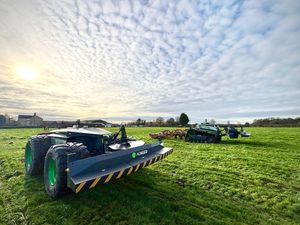Farming Talk: Effective plan offers help to cut lameness
Of all the reasons for culling dairy cows, lameness accounts for 16 per cent.
Lame cows cost time and money with the majority of lameness costs being associated with reduced fertility, loss of potential milk yield and increased risk of culling.
Lameness can reduce conception rate by more than 25 per cent and increase the risk of ovarian cysts by 2.5 times.
Initial costs of lameness are estimated at £323 per case (Willshire and Bell, 2009) – ranging from approximately £75 for a simple case of digital dermatitis to £2,000 by losing a cow with an infected ulcer as an involuntary cull.
Clearly, prevention is better than cure and like everything in life you need a plan. Fail to plan, plan to fail! There are no quick fix products or solutions.
Nigel Cook, MRCVS from University of Wisconsin-Madison, School of Veterinary Medicine, has designed a plan for investigating lameness in dairy herds.
It's a great plan that's worth considering if you're about to embark on sorting out lameness in your herd. The plan involves the following nine areas:
1. Locomotion Scoring – cows should be scored using a 4-point system. 15 per cent of scores 3-4 indicate a problem.
2. Hoof Trimming Assessment – 10-15 cows are assessed by a qualified hoof trimmer.
3. Hoof Records Assessment.
4. Leg Hygiene and Footbaths – assess level of leg hygiene and calculate target frequency of foot bathing.
5. Cow Comfort – examine risk factors for prolonged time spent standing each day.
6. Walking Surfaces – assess standing and walking surfaces for the risk of wear, trauma, slipping and concussion.
7. Nutrition & Feeding – investigate nutritional risk factors for lameness, including the ration levels of zinc and biotin, and risk factors for sub-acute ruminal acidosis, such as returning from the parlour to an empty trough, lack of trough space, high DM TMR, risk of sorting, and inadequate NDF and excessive starch.
8. Problem List – identify problem areas and consider the costs and benefits of possible interventions to improve them.
9. Action Plan – starting with the changes that will produce the greatest impact on the herd problem, develop a farm specific action plan (usually no more than six changes), facilitating these changes as much as possible.
Steve Brown, Ruminant Feeds Product Manager, Wynnstay Group plc





